According to modern scientific interpretation, the Earth crust is littered with impact craters. And yet, the line of reasoning used to explain them as impacts is rife with holes.
Take for example the Sudbury Basin "Crater" in Canada. This is supposedly the third largest crater in the world. It is said to be 1.85 billion years old, one of the richest mining areas in the world. Geological consensus that it is an "impact crater" comes from the presence of shatter cone1 and shocked quartz2. As will be pointed out, these two particular features of the geological data found around "craters" have become taken as proof of impact, even in spite of anomalies that suggest otherwise.
For instance, the Sudbury Basin "Crater" is next to Lake Wanapitei, which is supposedly a "crater" that is unrelated. Moreover, the Temagami Magnetic Anomaly is a magnetic anomaly "resulting from a large, buried, geological structure."
These three features are physically positioned near each other, and most interestingly the Sudbury Basin (SIC) is nearly the same size and shape as the Temagami Magnetic Anomaly (TA):
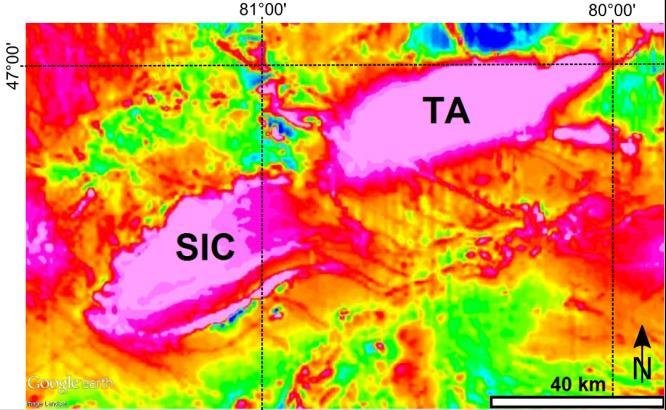
Kawohl et al..
In addition, there are lines to the southeast of each feature, as if they both were caused by a physical motion to the northwest of materials. Based on the angle of these linear features, the Sudbury Basin and the Temagami Magnetic Anomaly were formed in the same process, and yet the "impact crater" interpretation claims that all these structures are unrelated.
This is not the only case of "unrelated" features. Take Clearwater Lakes, for instance:
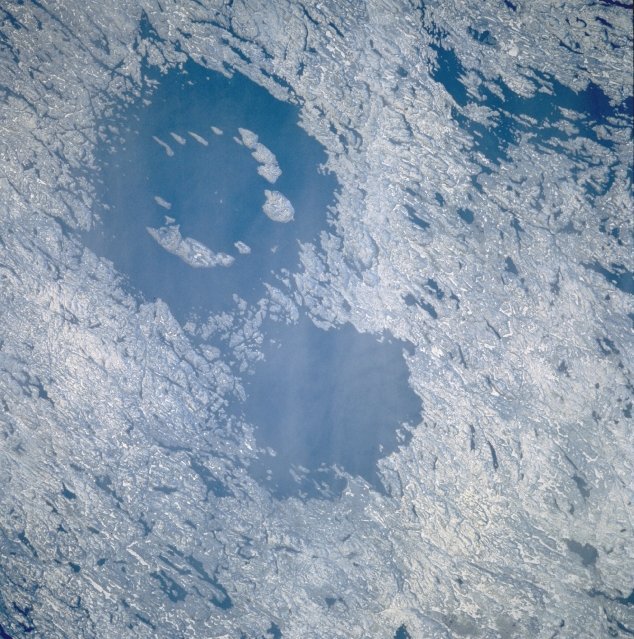
Source
These lakes are located in Canada as well. Initially, they were interpreted to be impact craters formed simultaneously due to an object breaking into multiple pieces in the atmosphere and impacting these two adjacent positions. However, this theory was disproven when the two features were dated. The eastern lake is said to be 460 million years old, while the western lake is only said to be 286 million years of age. Therefore, they did not form simultaneously and are not the "binary asteroid impact it seems."4
As stated by Schmieder et al.4:
"Numerical models and statistical probability calculations for the production rate of doublet craters on Earth suggested that two individual impacts, large enough to produce a Clearwater-sized 'false doublet', are highly unlikely. According to Miljkovic et al.5, only one such false doublet would be expected on the Earth's entire surface over a time period of 200 million years.
"However, the geologically ancient Canadian Shield is a heavily cratered domain of the Earth's crust. The lines of 40Ar/39Ar geochronologic, paleomagnetic, stratigraphic, and geochemical evidence synthesized here are in conflict with the proposed double impact scenario and suggest that the close proximity of the two Clearwater Lake impact structures is, most likely, pure coincidence."
Coincidence? If we take a look at the location of "impact craters" across the globe, their position should be essentially at random. Asteroids do not care where on Earth they impact, they just hit where they hit. They cannot pick and choose which areas are most preferential. With that in mind, we can look at the largest "confirmed" impact craters. There are forty-three with a diameter greater than 20 kilometers, all of which are said to be older than 10 million years. Fourteen of those forty-three are in Canada, accounting for 32.5% of the largest "impact craters" on Earth. Moreover, 8 are in Australia accounting for another 18.5%, making up greater than 50% of the largest "impact craters" combined.
Canada has a surface area of 3.855 million square miles while Australia has a surface area of 2.97 million. The total land surface area of Earth is 57.5 million square miles. This means that Australia and Canada make up 11.8% of the total land surface area of the Earth, and yet disproportionately have 51% of the total "impact craters" greater than 20 kilometers in diameter.
This is over 4 times more than would be expected from random impact positioning. In other words, none of these structures are properly interpreted. While asteroids do not prefer where they impact on a planet, volcanic processes tend to be dependent on position, and frequently cluster together.
Therefore, likely the vast majority of past volcanic eruptions are wrongly labeled "impact craters". Most of these structures are based off of the presence of shatter cone or shocked quartz. However, these are definitely insufficient for determining a site to be an impact versus a past volcanic event. For example, Amelia Creek "Crater" was only discovered due to the presence of shatter cone.
If we zoom out from this "crater", where shatter cone was discovered, we see an extensive lava flow landscape:
From Bing Maps
If we zoom out even further, the entire area is covered with ancient lava flows:
From Bing Maps
There are several anomalous features regarding shatter cone and its usage as an indication of an impact crater. For example, impacts would cause generally parallel orientation of shatter cone structures. Widespread occurrences of cones pointing in several directions indicate that claims of "generally parallel" and "oriented in one direction" are invalid. In particular, "at both the Tunnunik and Haughton impact structures, shatter cones with apices pointing in variable—and often completely opposite—directions are the norm, not the exception."6
As a result, essentially all "impact craters" are drawn into question regarding their origin. In fact, it is arguable that most, if not all, are not impact craters but rather are the result of past volcanic activity for the above reasons. Most of the argument regarding shatter cone and shocked quartz deriving from an impact is related to the Chicxulub "impact crater" having these features, but even this so-called "impact" is drawn into question.
Venus has features known as "farra" which are associated with volcanic eruption:
.png)
Source
Likely, the same process resulted in Earth's preferentially positioned "impact craters" across the globe, which have become much more eroded and covered over time.
For More Information
Check out my previous post: Earth History: The Himalayas as a Key to Understanding. My physics research is available at my website CascadingUniverse.org as well as in my book, The Instruction Manual: As It Is Written In the Cosmos, which can be found at my website and through the audiobook reading version I posted on YouTube.
- Bray, JG (1966) "Shatter cones at Sudbury", The Journal of Geology.
- French, Bevan M. (1967) "Sudbury Structure, Ontario: Some Petrographic Evidence for Origin by Meteorite Impact", Science.
- Kawohl, Alexander et al. (2017).What's inside the Temagami geophysical anomaly, Sudbury District, Ontario? SGA Québec 2017 extended abstract, Vol. 4, 1543-1546.
- Schmieder, M., Schwarz, W. H., Trieloff, M., Tohver, E., Buchner, E., Hopp, J. & Osinski, G. R. 2014. New 40Ar/39Ar dating of the Clearwater Lake impact structures (Québec, Canada) – Not the binary asteroid impact it seems? Geochim. Cosmochim. Acta (in press).
- Miljkovic K., Collins G. S., Mannick S. and Bland P. A. (2013) Morphology and population of binary asteroid impact craters. Earth Planet. Sci. Lett. 363, 121-132.
- Osinski G., Ferriere L., Shatter cones: (Mis)understood?, Science Advances Vol. 2, no. 8 (2016).
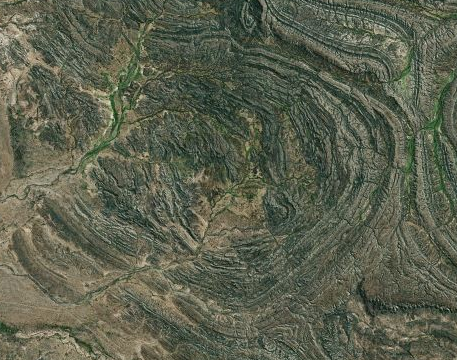
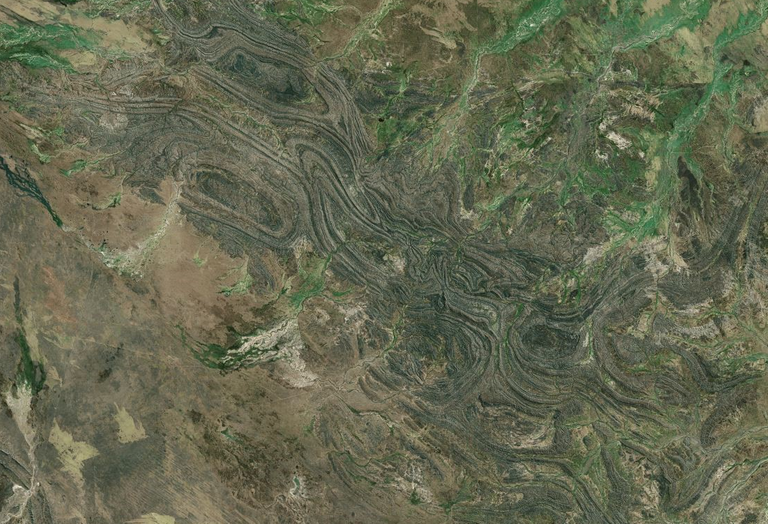
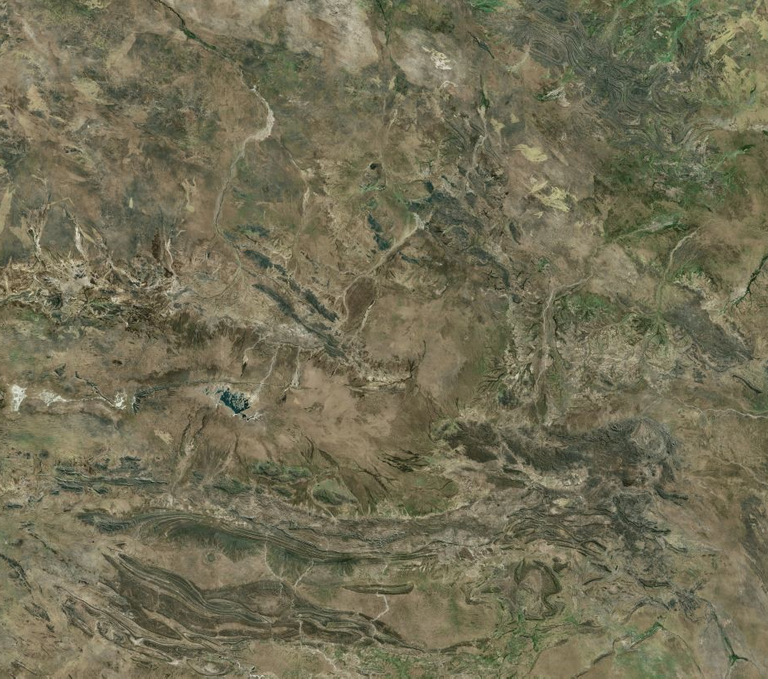
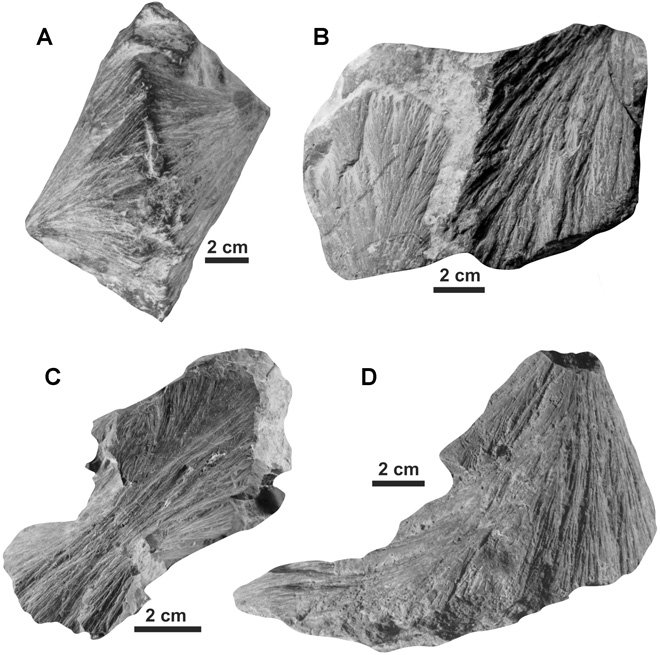
Curated for #seekingthetruth (by @truthseeker101)
Our goal is to support Truthers and Alternative Media posts discussing what the gov doesn't want you to know about, Propaganda, Disinformation and other false narratives.
If you would like to help support our effort in helping other truthers get more exposure you can: